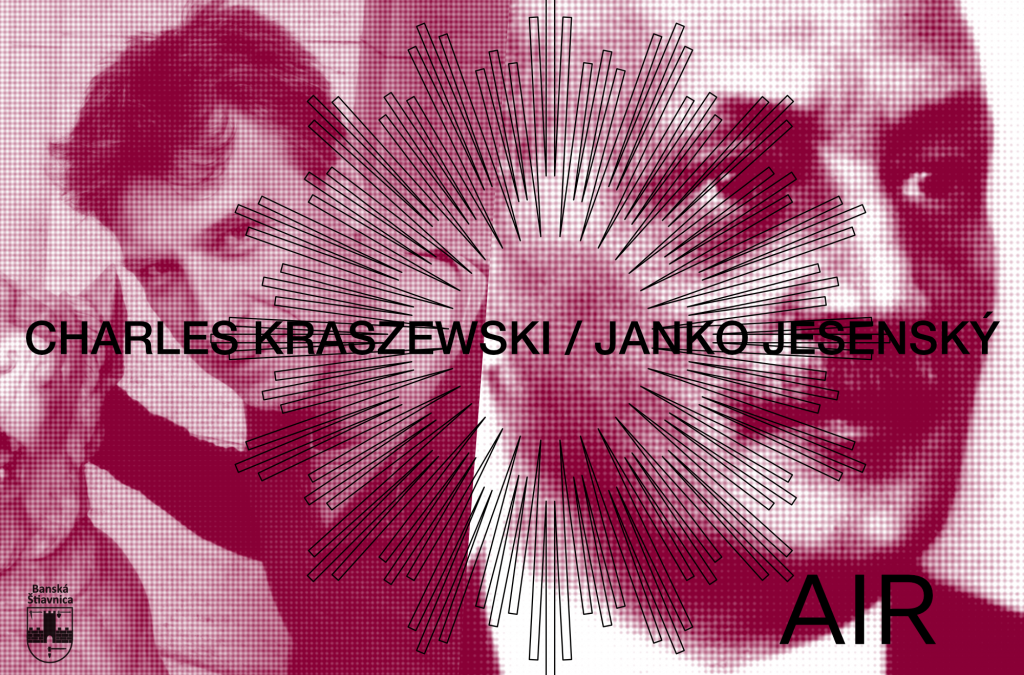
TROJICA AIR's final resident in 2021 is translator Charles S. Kraszewski.
Charles S. Kraszewski (1962) is a translator of Slovak, Czech and Polish literature into English. He collaborates with the London publishing house Glagoslav, which also published his translation of Ľudovít Štúr's Slavdom: A Selection of his Writings, in Prose and Verse. The translation of Janko Jesenský's writings that he is working on during his residency will include the author's memoirs of the First World War (Cestou k slobode - On the Road to Freedom) and selected poems from the volumes Zo zajatia (From Captivity) and Čierne dni (Black Days).
The organizers decided to plan an event that would bring the work of translating Slovak classics into English closer to the public. The discussion, entitled "Slovak Classics Speak to the World”, aired on Monday, December 13, at 6:00 p.m. on the LIC's YouTube channel. Translators of older Slovak literature into English, Charles Kraszewski, John Minahane and Charles Sabatos discussed their translations and the challenges of translating and publishing non-contemporary literature with Miroslava Vallová. More information is available on Facebook.
Below, you can find a selection of answers from the resident about how he enjoyed working in Banská Štiavnica. The full interview, conducted by Michal Kríž, was published in the magazine Štiavnické noviny.
What kind of translations are you working on during your stay at TROJICA AIR?
I am working on the writings of Janko Jesenský. I am translating the book On the Road to Freedom and his poems from the same period. In addition, I am thinking about other Slovak projects - Hollý, Kollár, Šafárik...
Your first translations from Slovak are the works of Ľudovít Štúr and Janko Jesenský. What made these works interesting for you, what appealed to you?
For me, both writers are connected to Krakow. In the eighties, when I was a student, I discovered Štúr. I have been fascinated by him ever since. I found Jesenský's On the Road to Freedom in an antique shop on Bracká Street, which, unfortunately, no longer exists. It is a beautiful memoir from the period of the Czechoslovak legions in Russia, and so different from Hašek's memoirs! Štúr is certainly a great patriot, but he is also a great poet. Both Svatoboj and Matthew of Trenčín are simply great poems. I admire both writers' devotion to their homeland, their willingness to act positively for the benefit of Slovak (and Czechoslovak) culture, while others are content to complain. In my opinion, they have a lot to say nowadays, when small cultures are threatened, whether by the world culture of American kitsch or by other currents that can undermine what constitutes Slovak, Polish or Czech identity. Aside from that, Jesenský and Štúr were, of course, great talents. The characters of Svatoboj and Matúš have a gravitas equal to, say, Macbeth, and Jesenský's prose is pure, expressive. The way he paints in words, for example, the nature of Siberia is incomparable. What wonderful coloring!
In what ways do you think these works can appeal to English-speaking readers? Does Slovak literature even have a chance of finding its readers in such a demanding literary market?
First of all, I want to introduce Slovak authors to English readers because they create amazing literature. But it also seems to me that citizens of countries where they don't know stories from Slovakia, the Czech Republic or Poland often take their safe, peaceful lives for granted, something that always has been and always will be. Experiences from the years of war or communism, as well as earlier ones in Slovakia, such as 1848, the struggle for the survival of Slovak culture in the face of Hungarianisation, the national uprising, described in books by Slovak authors, can remind people of the value of a life of freedom, even at the price that sometimes has to be paid for it.
How do you find working in Banská Štiavnica and what do you think about the conditions created for you by the Slovak Literary Centre, OZ Literatúra and the town of Banská Štiavnica?
The working conditions here are excellent. I am very grateful to LIC, OZL and the City of Banská Štiavnica for the opportunity to stay here, in this beautiful city. I feel the best in this part of the world, that means in Poland, in the Czech Republic, in Slovakia. It is my first time here, but I already feel at home in Banská Štiavnica. Of course, I am sorry that we are now living in a lockdown, but I have still had the opportunity to get to know the town well enough to be able to say that Banská Štiavnica is one of the most beautiful towns I know. I will be sorry to leave!